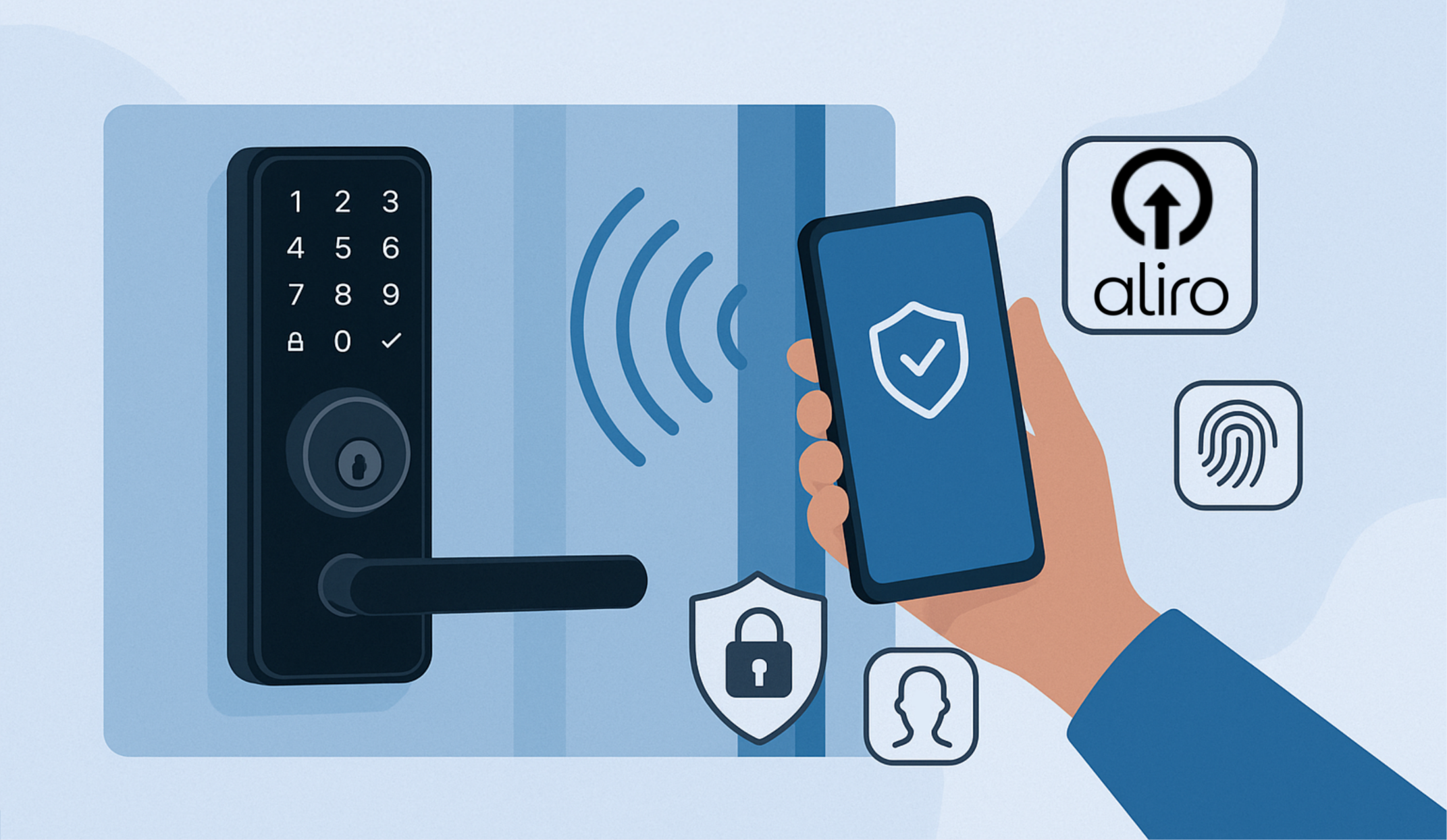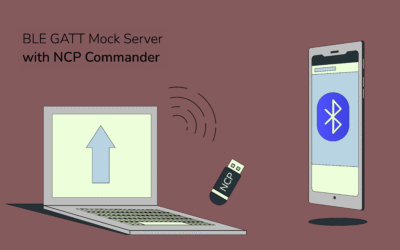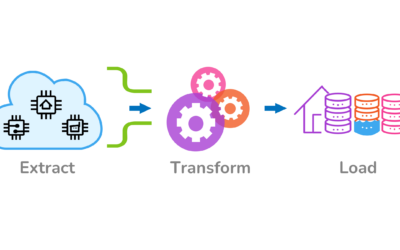Table of Content
Sub-1 GHz technology is critical in developing and deploying IoT solutions that require low power consumption and reliable long-range connectivity.
Mastering the basic concepts helps our clients choose the right components for their sub-1 GHz wireless systems, ensuring optimal performance for various IoT applications.
Krasamo, an IoT development company, provides expert guidance on selecting appropriate System-on-Chip (SoC) and module solutions for sub-1 GHz IoT applications.
As part of our IoT concept series, this blog post illustrates the importance of sub-1 GHz technology, its application in real-world scenarios, and how it can optimize IoT networks for energy efficiency and range.
Sub-1 GHZ Essentials
Sub-1 GHz technology is increasingly important for IoT applications today for several key reasons:
1. Longer Range: Sub-1 GHz frequencies, such as 433 MHz and 915 MHz, offer superior transmission ranges compared to higher frequency bands like 2.4 GHz. This is crucial for IoT applications where devices may need to communicate over large distances, such as industrial automation or smart metering. It allows for reliable connectivity without requiring repeaters or additional infrastructure.
The range of sub-1 GHz systems can vary significantly depending on environmental factors, such as obstacles (e.g., buildings, metal objects) and interference levels, particularly in urban areas. To maximize range performance, careful consideration should be given to antenna placement and ensuring that elements like antennas are spaced out properly to minimize interference.
2. Better Penetration: Sub-1 GHz signals can penetrate obstacles like walls and buildings more effectively than higher frequencies. This characteristic is especially important in urban or industrial environments where physical barriers can obstruct communication. Maintaining a stable connection in such scenarios is vital for many IoT applications, including smart home devices and environmental monitoring systems.
3. Lower Power Consumption: Many sub-1 GHz protocols are optimized for low power consumption, making them suitable for battery-powered IoT devices. Longer battery life is a significant advantage, as many IoT applications, such as remote sensors, require devices to operate for extended periods without frequent battery replacements. This low power requirement makes sub-1 GHz technology suitable for smart grids and agricultural monitoring applications.
4. Reduced Interference: The sub-1 GHz frequency bands typically experience less congestion and interference than the crowded 2.4 GHz band, which many devices use, including Wi-Fi and Bluetooth. Operating in bands with reduced spectral noise allows for more reliable communication, fewer transmission retries, and improved overall efficiency in data transmission.
5. Cost-Effective Solutions: Sub-1 GHz wireless systems can be more cost-effective for low-data-rate applications. Their longer range and lower power requirements reduce the need for additional infrastructure, such as repeaters or frequent battery replacements, helping to lower both deployment and maintenance costs compared to higher-frequency alternatives.
Low-data-rate devices are electronic devices that transmit small amounts of data at slow speeds. They are commonly used in applications where high-speed data transmission is unnecessary. Still, factors like long-range communication, low power consumption, and extended battery life are more critical.
6. Wide Range of Applications: Sub-1 GHz technology supports diverse IoT applications, from smart home devices to industrial automation and smart grid technology. This versatility enables developers to choose the appropriate technology based on specific application requirements, enhancing the overall functionality and efficiency of IoT solutions.
7. Support for Standards-Based Protocols: Sub-1 GHz wireless systems often support a variety of standards-based protocols, such as Zigbee, and LoRaWAN. While Zigbee primarily operates at 2.4 GHz, regional variants may use Sub-1 GHz frequencies. This interoperability is essential for creating cohesive IoT ecosystems, allowing devices to work seamlessly.
Interoperability in Sub1 GHz wireless systems allows devices to connect in mesh networks, where each device can act as a node, extending the network’s range and robustness. This is particularly important for smart city applications and industrial IoT environments, where maintaining connectivity across various devices and systems is essential.
Sub-1 GHz Concepts
We want to illustrate the importance of Sub-1 GHz technology in modern wireless communication, particularly for applications requiring low power consumption and reliable long-range connectivity.
What is Gigahertz?
Gigahertz (GHz) is a unit of frequency equivalent to one billion hertz (cycles per second). It is commonly used to measure the frequency of electromagnetic waves, including radio frequencies. For instance, 2.4 GHz is a widely used frequency for wireless communications, such as Wi-Fi and Bluetooth.
What is Sub-1 GHz?
Sub-1 GHz refers to frequencies below 1 GHz, encompassing bands like 433 MHz, 868 MHz, and 915 MHz. This frequency range is utilized in various wireless communication applications due to its advantageous properties, including a longer range and better penetration through obstacles than higher frequencies like 2.4 GHz.
What is Sub-1 GHz Used For?
Sub-1 GHz technologies are commonly used in applications such as:
- Industrial Automation: Sensors and devices communicate over long distances even in environments with high levels of radio frequency interference.
- Smart Metering: Utility meters (electricity, water, gas) transmit data reliably over long ranges.
- Smart Home Devices: Various IoT devices (such as security systems, environmental sensors, and smart locks) are often designed for low power consumption, enabling efficient long-term operation on batteries.
- Agricultural Monitoring: Wireless sensors help monitor soil conditions and optimize farming practices.
What is the Sub-1 GHz Range?
Sub-1 GHz wireless systems can achieve transmission ranges exceeding a kilometer, especially in open environments. Actual range varies based on modulation, power levels, antenna design, and environmental factors.
What is a Sub-1 GHz Module?
A Sub-1 GHz module is a pre-packaged component that includes all necessary hardware and firmware for sub-1 GHz wireless communication. These modules typically integrate a radio transceiver and may include microcontrollers, memory, and other components needed for specific applications, enabling developers to implement wireless functionality in their devices easily.
What are Sub-1 GHz Devices?
Sub-1 GHz devices refer to any electronic devices equipped to operate on sub-1 GHz frequencies. These include IoT sensors, actuators, remote controls, and smart meters, which take advantage of sub-1 GHz technology’s benefits, such as low power consumption and long-range communication capabilities.
What is a Sub-1 GHz Transceiver?
A sub-1 GHz transceiver is a device that can transmit and receive signals on sub-1 GHz frequencies. It typically includes a radio module that facilitates wireless communication by encoding and decoding signals. Transceivers are fundamental components in wireless networks, enabling devices to interact seamlessly.
What is a Sub-1 GHz Antenna?
A sub-1 GHz antenna is designed to operate effectively at frequencies below 1 GHz. Due to the inverse relationship between frequency and antenna size, these antennas are generally larger than those used for higher frequencies. For example, an optimal antenna for a 433 MHz application can be several inches long. These antennas ensure adequate signal transmission and reception in sub-1 GHz wireless applications.
Sub-1 GHz Networking Protocols
Interoperability with various standards Achieving interoperability is essential for successful sub-1 GHz deployments.
- Z-Wave
- LoRaWAN
- Amazon Sidewalk
- Zigbee (typically 2.4 GHz, with some regional Sub-1 GHz variants
- WI Sun
ISM Bands (Industrial, Scientific, and Medical)
ISM bands are specific radio frequency bands designated for use by industrial, scientific, and medical devices without the need for a specific license. They are intended for unlicensed operation to facilitate the development and deployment of wireless technologies and have similar usage rules and power limits that can vary.
ISM bands are recognized internationally, although the specific frequencies can vary by region. Common ISM bands include:
- 433 MHz
- 868 MHz (primarily in Europe)
- 915 MHz (primarily in North America)
- 2.4 GHz (widely used for Wi-Fi, Bluetooth, and Zigbee)
Devices operating in ISM bands typically must adhere to specific power limits to minimize interference with other devices and systems. These devices are used for various applications, including remote controls, smart meters, medical devices, and wireless sensors.
The designated band, propagation characteristics, antenna sizes, and performance must be considered when designing IoT devices.
Short Range Devices (SRD)
Certain frequency bands are regionally allocated for Short-Range Devices (SRDs), which are low-power radio transmitters intended for short-distance communication applications. Similar to ISM bands, these frequencies are typically unlicensed but may be subject to more specific operational restrictions such as limits on transmission power, range, and duty cycle.
SRDs are primarily used for short-range communication, making them suitable for personal area networks and specific IoT applications. To minimize interference with other systems, especially in dense urban environments, SRDs often operate under stricter power and duty cycle constraints. These devices are commonly used for RFID, home automation, wireless medical telemetry, and other localized communication technologies
Designation of Sub-1 GHz Bands
The primary reason for designating bands as short-range is to minimize interference with other licensed communication systems. Limiting the transmission range and power allows these systems to coexist without disrupting each other.
Many IoT and telemetry applications do not require long-range communication, so keeping the communication short-range allows the systems to operate effectively within their intended environments (like homes, hospitals, or factories) without extensive infrastructure.
Sub 1 GHZ Regulations
International and national regulations govern the use of sub-1 GHz frequencies, including ISM bands and the operational conditions for device categories such as Short-Range Devices (SRDs).
Organizations like the International Telecommunication Union (ITU) provide global frequency allocation guidelines. National regulatory bodies, like the Federal Communications Commission (FCC) in the U.S. and national spectrum authorities in Europe—such as Ofcom in the UK or ARCEP in France—implement these guidelines at a regional level.
Before designating specific bands, technical studies evaluate the potential for interference, operational efficiency, and the technical requirements of devices that use the band. These studies inform decisions on power levels, duty cycles, and frequency allocations.
Various standards organizations (e.g., IEEE, ETSI) develop technical standards for devices operating in these bands. These standards help ensure interoperability and compliance with the regulatory requirements.
Power Limits
Power limits refer to the maximum permissible radio frequency power that a device is allowed to transmit. Power limits define the maximum amount of radio frequency (RF) energy a device can emit. This is usually measured in milliwatts (mW) or decibels relative to a milliwatt (dBm).
Lower power limits (reduced range of signals) benefit applications that don’t require long-range communications and extensive infrastructure. Limiting the power output (transmit power) minimizes the potential for interference with other devices operating at the same frequency or in nearby frequency bands.
Devices operating under lower power limits tend to consume less energy, which is crucial for battery-powered applications.
Receiver sensitivity
Receiver sensitivity measures the lowest signal strength at which a receiver can accurately detect and decode a signal. Better sensitivity means the receiver can detect weaker signals, which improves range without increasing transmit power.
Optimizing transmit power and receiver sensitivity involves finding the right balance between signal strength and power consumption.
Propagation Characteristics
Devices operate across different sub-1 GHz frequencies, each with distinct propagation characteristics.Higher frequencies generally have better data transmission capabilities but cover shorter ranges, whereas lower frequencies can penetrate obstacles more effectively often with limitations in data rates.
Antenna Size
Antenna size is directly related to the wavelength of the signal it’s designed for, with longer wavelengths requiring larger antennas. Since wavelength is inversely proportional to frequency, a 315 MHz signal has a longer wavelength (approximately 0.96 meters) compared to a 433 MHz signal (approximately 0.69 meters). Therefore, antennas designed for 315 MHz applications will generally be larger than those for 433 MHz.
Business Benefits and Scalability
Sub-1 GHz technology offers significant advantages for businesses looking to optimize their IoT deployments. Not only does it improve connectivity with long-range communication and better penetration, but it also provides cost-saving opportunities by reducing the need for infrastructure like repeaters. This reduction in hardware lowers both initial and ongoing operational costs.This flexibility makes sub-1 GHz technology an ideal choice for global IoT deployments.
Contact our IoT consulting services team for more information about developing IoT systems and devices with sub-1 GHz connectivity.













I’d appreciate clarification on long-range wireless capabilities with sub-ghz solutions.
I must say that I’m intrigued by your query regarding long-range wireless capabilities with sub-ghz solutions 📊. Based on my reading, it seems that sub-ghz frequencies are well-suited for applications requiring reliable connectivity over large distances, such as industrial automation and smart metering 💡. As an IoT consulting expert, I can attest to the benefits of using sub-ghz technology in these scenarios, including reduced interference and low power consumption 🔋. However, it’s worth noting that environmental factors can significantly influence range performance 🌐. Would you like me to elaborate on this further?
Thank you so much for your thoughtful response! Your points about environmental factors influencing range performance in sub-ghz solutions are well-taken. As an IT professional familiar with IoT consulting, I appreciate your input on this topic.
I thoroughly enjoyed this blog post on Sub-1 GHz connectivity solutions! However, I’d love to see a more in-depth discussion on the impact of long-range wireless protocols like LoRaWAN and Sigfox on device design and deployment. Specifically, how do these technologies mitigate signal degradation at sub-ghz frequencies, particularly in areas with high multipath propagation? Let’s dive deeper into the trade-offs between power consumption, data rate, and coverage area 📈💻
I completely agree that a deeper discussion on the impact of long-range wireless protocols like LoRaWAN and Sigfox on device design and deployment would be beneficial. It’s fascinating to explore how these technologies mitigate signal degradation at sub-GHz frequencies, particularly in areas with high multipath propagation, while balancing power consumption, data rate, and coverage area requirements.
I totally relate to the benefits of using sub-ghz connectivity solutions in IoT applications. In my previous role as a data scientist at a precision agriculture company, we implemented a network of soil moisture sensors that used 868 MHz LoRaWAN modules. The result was a significant reduction in battery replacements and interference issues, allowing us to collect accurate data for over a year without maintenance. It’s great to see more emphasis on low-power, long-range connectivity solutions like sub-ghz!
I’ve successfully implemented a sub-1 GHz solution for our factory’s temperature monitoring system, utilizing long-range wireless connectivity with great results and minimal interference.